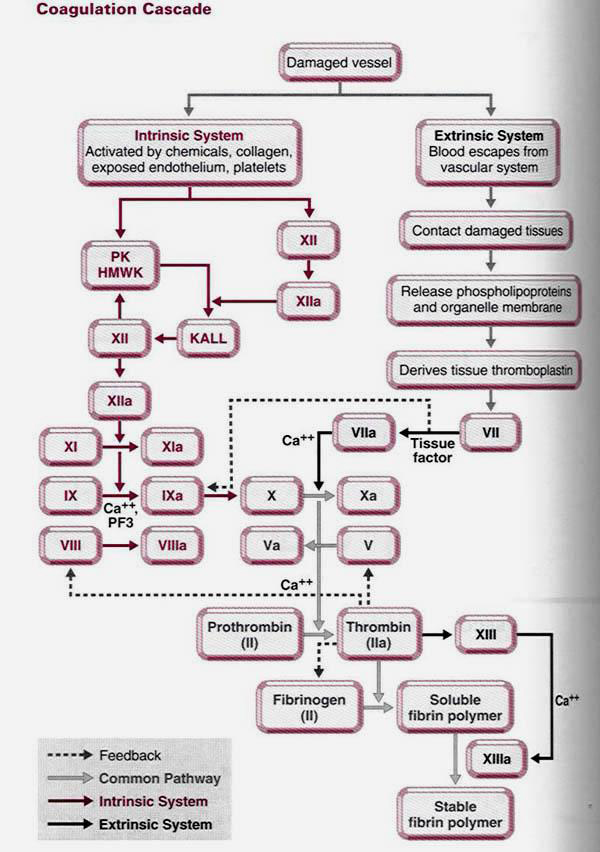Coagulation Cascade

Initial Pathway (Extrinsic)
1. A cell membrane protein called tissue factor (TF), present on the outside of all human cells with the exception of red blood cells and endothelium, binds with a plasma protein, Factor VII (FVII) converting FVII to the active FVIIa.
2. The TF/FVIIa complex initiates the clotting cascade.
3. TF/FVIIa complex reacts with plasma proenzymes factor IX (FIX) and factor X (FX) converting them to active enzymes FIXa and FXa.
4. Small amounts of FXa react with prothrombin (FII) in the presence of cofactor FVa(FV is released from platelets). This produces thrombin (FIIa).
5. Thrombin catalyzes fibrin formation from fibrinogen
This initial pathway is independent of Factor VIII (factor missing in hemophilia A) and Factor IX (factor missing in hemophilia B). The question arises, why can’t the body utilize only this pathway in the absence of Factor VIII or IX?
When the body has made a small amount of fibrin, a substance known as Tissue Factor Pathway Inhibitor (TFPI) is released. This inhibitor binds to the TF: FVIIa/FXa complex, preventing further formation of factor FXa. It is thought that TFPI is released to protect against overreaction of the coagulation system. At this point, the intrinsic pathway is activated.
II. Intrinsic Pathway
1. The small amount of FIIa(thrombin) formed from the initial pathway activates the inactive pro-cofactor FVIII to FVIIIa.
2. Factor FVIIIa forms a complex with activated FIXa.
3. FVIIIa/FIXa complex is responsible for the continuous formation of thrombin, which in turn cleaves fibrinogen into fibrin. This step is crucial for the formation of a durable secondary hemostatic plug.
